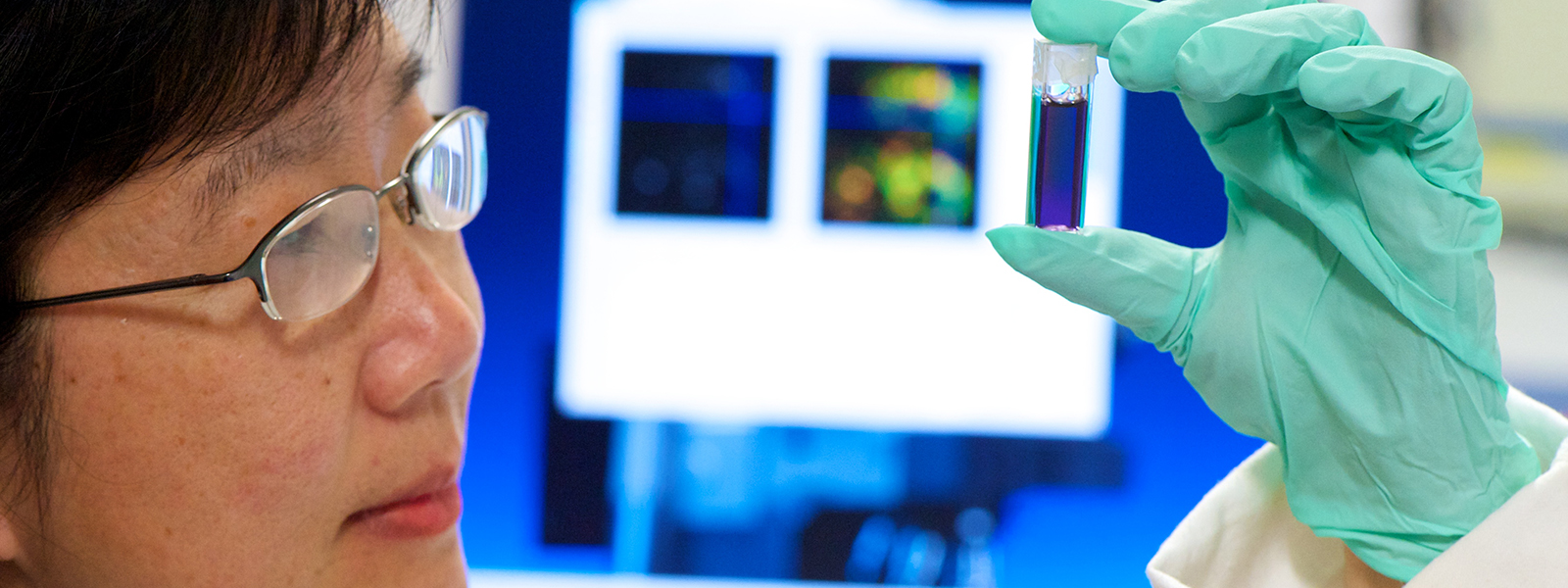The Nanoscience Division covers a wide range of scientific areas in which nanometre scale objects or properties impact upon our lives. It brings together strengths in areas including state-of-the-art microscope development and application, imaging and spectroscopy and covers work on a variety of important organic and inorganic materials. The Division has expertise in experimentation, theory and simulation and comprises two research groupings: the Physics of Life Sciences group and the Semiconductor Spectroscopy and Devices group.
Current academics
Our current academics and their core interests are:
- Dr Yu Chen - molecular nanoprobe design
- Dr Oliver Henrich – mesoscopic & coarse-grained simulation methods for soft condensed matter
- Dr Konstantinos Lagoudakis – experimental quantum nanoscience
- Professor Robert Martin – semiconductor materials and devices
- Dr Fabien Massabuau – gallium oxide optoelectronic devices
- Dr David McKee – marine optics and ocean colour remote sensing
- Dr Brian Patton – adaptive optics-based super-resolution microscopy
- Dr Alessandro Rossi – quantum computing & quantum electrical metrology in semiconductors
- Dr Carol Trager-Cowan – electron diffraction in the scanning electron microscope
Research, Emeritus & Visiting Professors
Research, Emeritus and Visiting Professors are:
- Professor David Birch – biomedical research using time-resolved fluorescence
- Professor Zygmunt (Karol) Gryczynski - fluorescence spectroscopy and microscopy
- Professor John Pickup - glucose sensing and diabetes
- Dr Aimo Winkelmann - electron backscatter diffraction
The Division also includes a number of Facilities and Centres:
- Scanning Electron microscopy facility – managed by Paul Edwards
- The Centre for Molecular Nanometrology
- Access to Strathclyde's high-performance computing centre
Physics of Life Sciences (PoLS)
Research in the Physics of Life Sciences group focuses on using optical and computational methods to measure and understand the fundamental processes of life.
Our team of academics use a range of spectroscopy and imaging techniques to seamlessly cover the full breadth of time and length scales that are essential to biological function. These range in from real-time studies of molecular-processes in cells up to organism-level imaging and oceanographic remote sensing of algal populations.
Our timescales range from rapid studies of molecular dynamics to decadal studies of natural biomass. Our aim is to enable deeper understanding of complex biological systems through quantitative physics approaches across this range of scales.
Semiconductor Spectroscopy & Devices (SSD)
The Semiconductor Spectroscopy and Devices group combines studies of optical processes in advanced semiconductor materials and the realisation of practical optoelectronic devices. The group has an international reputation for quantum nanoscience and quantum electrical metrology as well as optical and electron-beam micro-spectroscopy of semiconductors (in particular III-nitride compounds that are used for UV and visible LED and laser displays).
Particular interests include:
- cathodoluminescence & X-ray microanalysis of semiconductors
- structural studies by electron diffraction (EBSD and ECCI)
- gallium oxide for optoelectronic devices
- physics & applications of polariton condensates in microcavities
- solid-state quantum systems for quantum information & nanophotonics
- quantum computing & quantum electrical metrology
- chalcogenides & perovskites for solar-cell applications
The analysis of the structure, composition, and optical function of heterogeneous materials is achieved on a scale of nanometres by in-house electron probe microanalysis (EPMA) and hyperspectral imaging in the scanning electron microscope.
